HOW TO GROW AND USE TURMERIC / COMO CULTIVAR Y APROVECHAR LA CÚRCUMA
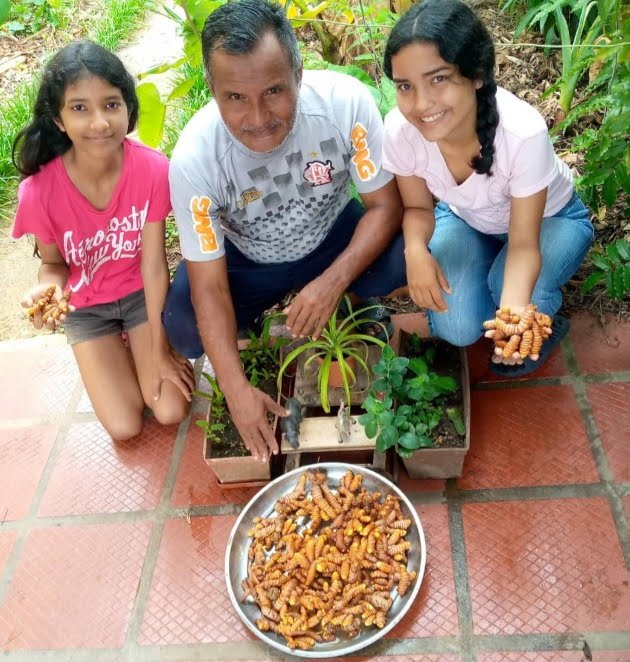
Enjoying the harvest with my beautiful family.
Disfrutando la cosecha con mi hermosa familia.
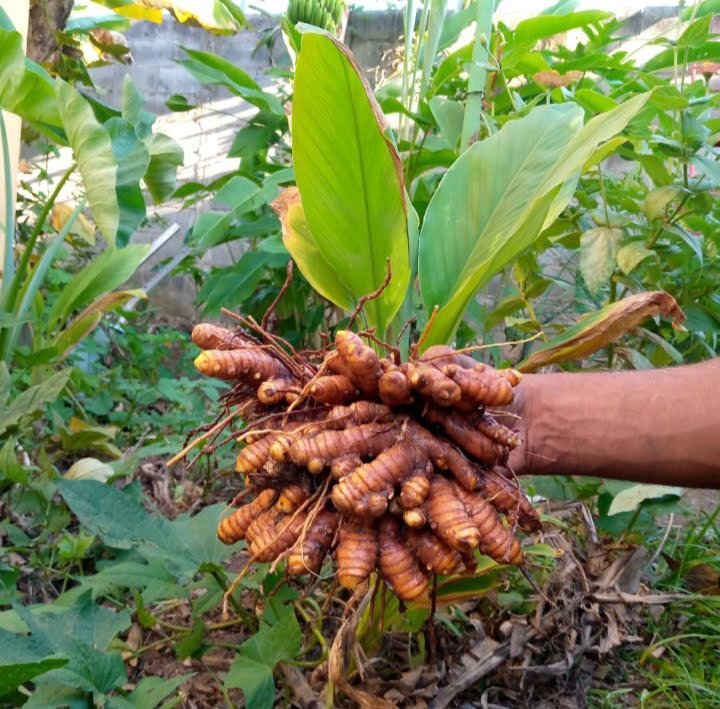
I wish you an excellent day, I will begin the tour of the wonderful natural world, referring to a plant known in this area as turmeric, but as it is known by several names, its botanical name is Curcuma longa. Taxonomically it belongs to the Zingiberaceae family, to which ginger belongs, hence its similarities.
Les deseo un excelente día, iniciaré el recorrido por el maravilloso mundo natural, refiriéndome a una planta conocida en esta zona como cúrcuma, pero como es conocida por diversos nombres, su denominación botánica es Cúrcuma longa. Taxonómicamente es de la familia de las Zingiberáceas, a la cual pertenece el jengibre, de allí sus similitudes.

Turmeric is a perennial herb that has a height of about 80 cm, with orange or grayish-yellow rhizomes. It emits several stems, from which oblong leaves arranged in two rows, between the stems emerges an inflorescence. Its life cycle is approximately five months.
La cúrcuma es una hierba perenne que tiene una altura entorno a 80 cm, con rizomas de color anaranjado o amarillo grisáceo. Emite varios tallos, de los cuales salen hojas oblongas dispuestas en dos filas, entre los tallos emerge una inflorescencia. Su ciclo de vida es de aproximadamente cinco meses.
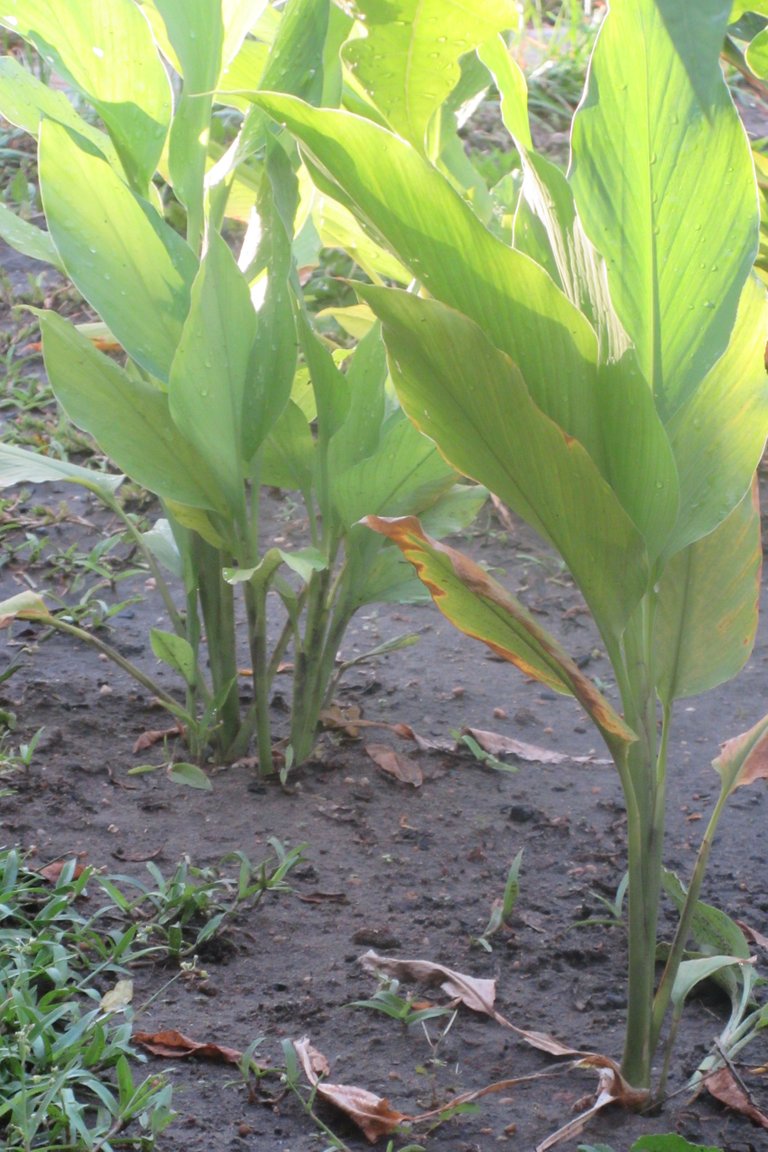
Conditions for its cultivation: given its beauty it can be cultivated as an ornamental plant, either directly in the ground or in pots with a minimum depth of 40 cm. It prefers loose soils with a high content of organic matter and a moderate level of humidity, as it does not tolerate excess moisture or drought. Although it tolerates full sun exposure, it develops better in semi-shade.
Condiciones para su cultivo: dada su belleza puede ser cultivada como planta ornamental, bien sea directamente en el suelo o en materos con una profundidad mínima de 40 cm. Prefiere suelos sueltos y con alto contenido de materia orgánica y un nivel de humedad moderado, pues no tolera el exceso de humedad, ni la sequía. Aún cuando tolera la plena exposición solar, se desarrolla mejor en semi sombra.
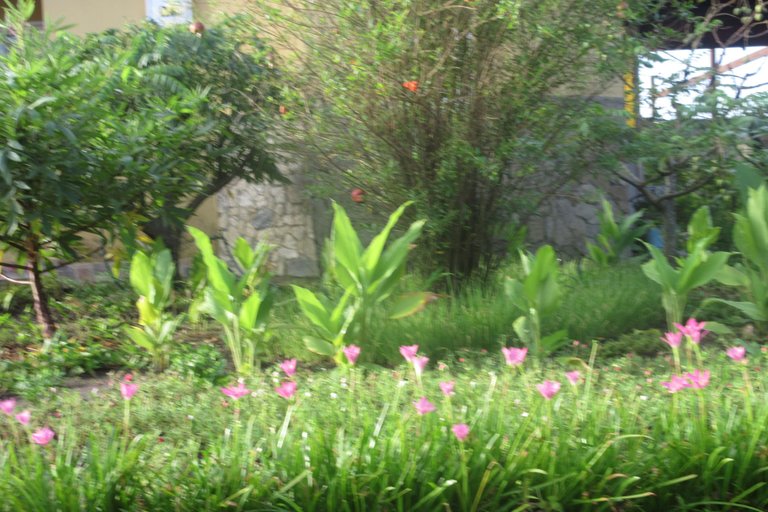
Planting material: the best rhizomes are selected and placed directly in the previously prepared soil or in nursery bags for subsequent transplanting.
Material de siembra: se seleccionan los mejores rizomas y se colocan directamente en el suelo previamente preparado o en bolsas de vivero para su posterior transplante.

To guarantee a good production of rhizomes, it is necessary to provide the soil with an organic fertilization of around 5 kg/m² accompanied by 0.5 kg of ash as a potassium source. In the tropical environment it is not affected by diseases, except for the rotting of some rhizomes due to excess of humidity, when there is not an adequate drainage or when the harvest is not carried out in a timely manner. On the other hand, some soil pests (cutter crickets) can cut the seedlings at the base, so it is necessary to protect the plants with natural repellents. If chemical insecticides are used, they should be applied with the utmost caution.
Cuidados de la planta: Para garantizar una buen producción de rizomas, es necesario proveer al suelo con una fertilización orgánica entorno a los 5 Kg./m² acompañada de 0,5 Kg de ceniza como fuente potásica. En el medio tropical no es afectada por enfermedades, salvo la pudrición de algunos rizomas por exceso de humedad, cuando no hay un drenaje adecuado o cuando no se efectúa la cosecha de forma oportuna. Por otra parte algunas plagas del suelo (grillos cortadores), pueden cortar las plántulas en la base, por lo que es necesario proteger las plantas mediante repelentes naturales. En caso de usar insecticidas químicos, deben aplicarse con máxima precaución.

**The good news is that this is a physiological process in the plant, which indicates that the effort that we have provided in their care has been rewarded with rhizomes (subway stems) that are the desired product.
Cuando cosecharla: generalmente las personas que se inician en su cultivo, se frustran porque la planta de cúrcuma que lucia bonita, alrededor de los cinco meses empieza a marchitar, la buena noticia es que se trata de un proceso fisiológico en la planta, que indica que el esfuerzo que le hemos proveído en sus cuidados ha sido recompensado con unos rizomas (tallos subterráneos) que son el producto deseado.
The rhizomes are extracted from the soil with the help of a shovel, taking care not to break the "fingers" of the rhizomes, so as not to affect their quality.
Cosecha: se extraen los rizomas del suelo con la ayuda de un palín, teniendo cuidado de no partir los “dedos” de los rizomas, de tal forma que no se afecte su calidad.

Post-harvest handling: Once extracted from the soil, they are washed and dried.
Manejo post cosecha: una vez extraídos del suelo se lavan y secan.
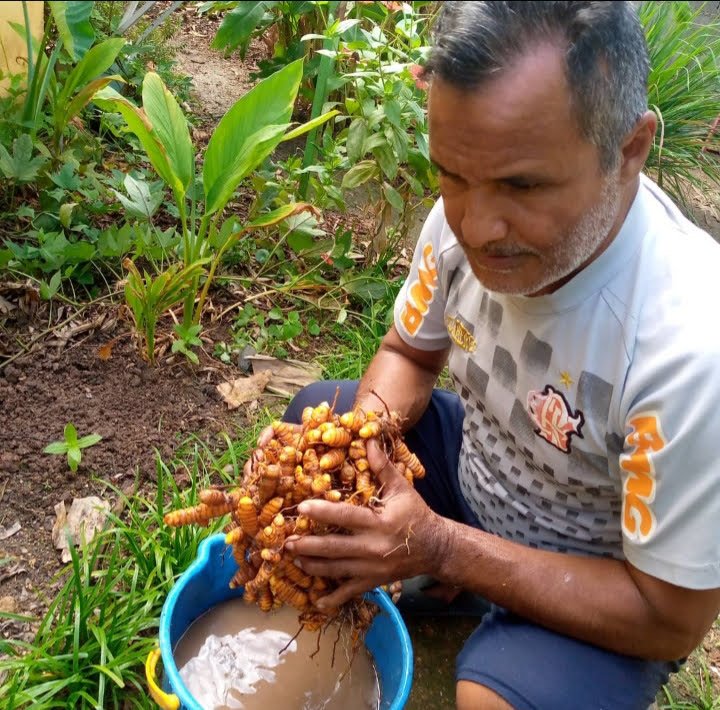
When it is cultivated for the family or for a local market it can be used as a fresh product, in my opinion it is of unsurpassable quality. In the case of intensive cultivation, the drying process is carried out and the respective milling to transform it into flour.
Cuando se trata de cultivo para la familia o para un mercado local se puede usar como producto fresco, en mí opinión es de insuperable calidad. Si se trata de cultivos intensivos se efectúa el proceso de secado y la molienda respectiva para transformarlo en harina.
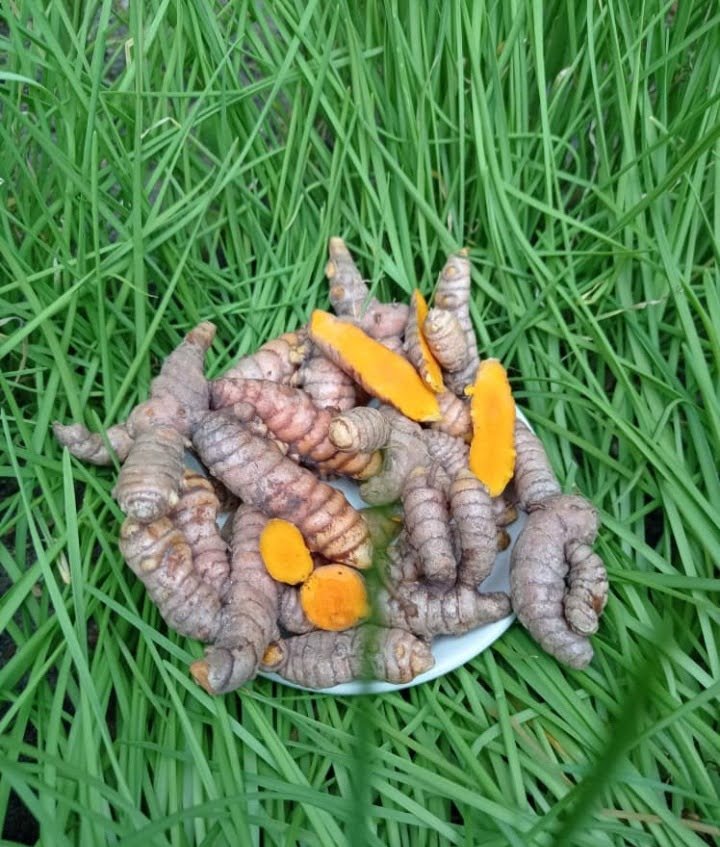
Uses: Generally this aromatic spice is used in cooking as a condiment and as a colorant, for its active ingredient curcumin, which gives turmeric its intense yellow color, being codified in the food industry as E-100. Chemically it is a polyphenol, i.e. a natural antioxidant. It is generally considered a "Superfood" and although the health benefits have not been proven, it is used against digestive problems and to treat liver problems, anti-inflammation and arthritis. The truth is that for a healthy diet it is advisable to incorporate turmeric in our kitchen, based on the famous phrase of Hippocrates "Let food be your best medicine and let your best medicine be your food".
Usos: Generalmente esta especia aromática se usa en la cocina como condimento y como colorante, por su ingrediente activo curcumina, el cual le confiere a la cúrcuma el intenso color amarillo, siendo codificado en la industria alimenticia como E-100. Químicamente es un polifenol, es decir un antioxidante natural. Generalmente se le considera un “Superalimento” y aún cuando los beneficios para la salud no se han demostrado, se le emplea contra los problemas digestivos y para tratar problemas hepáticos, antiinflamatio y de artritis. Lo cierto es que para una alimentación saludable es aconsejable incorporar a la cúrcuma en nuestra cocina, partiendo de la célebre frase de Hipócrates “Que el alimento sea tu mejor medicina y que tu mejor medicina sea tu alimento”.
Let's get to work and bon appetit, until next time.

Thank you for reading my post, thank you for your attention.
100% original content.
Images are my own taken from my Redmi Note 9 camera.
Use separators and banner made with Canva. Use Deepl translator.
Gracias por leer mi post, gracias por su atención.
Contenido 100% original.
Las imágenes son propias tomadas de mi camara Redmi Note 9.
Utilice separadores y banner hechos con Canva. Utiliza el traductor Deepl.
Que belleza de cúrcuma, gracias por compartir tus conocimientos, En mi jardín cultivare esta hermosa planta.. Del patio a la cocina. Sé que aprenderé mucho con tus post.
Congratulations @biocentro! You have completed the following achievement on the Hive blockchain and have been rewarded with new badge(s):
Your next target is to reach 50 replies.
You can view your badges on your board and compare yourself to others in the Ranking
If you no longer want to receive notifications, reply to this comment with the word
STOPCheck out the last post from @hivebuzz:
Support the HiveBuzz project. Vote for our proposal!
It is obvious that you put a lot of love into the cultivation of your turmeric. I have been growing it as an ornamental for a few years, though I had some trouble getting it to sprout when I first started. It goes dormant every year when the weather changes. Even if I bring it indoors it knows. Someday I hope to see the flower. I miss growing ginger as well. Both are beautiful plants.
Excelente información 👍🏻, voy a aplicarlo en unos rizomas, que recién planté.